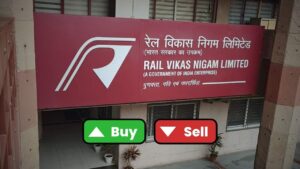The telecommunications industry is critical in shaping the communication infrastructure that supports businesses and organizations across the globe. This sector encompasses mobile networks, broadband services, and the emerging technology of Private LTE networks, which have become a game-changer for industries that require high levels of control, security, and reliability. Particularly for mission-critical operations in sectors like utilities, transportation, and emergency services, Private LTE networks provide dedicated resources and enhanced performance, making them a preferable choice over traditional public networks. The growing reliance on these networks can be attributed to their ability to support seamless communication in environments where disruptions can have far-reaching consequences.
Pratik Jangale has been a key player in this evolution, demonstrating profound expertise in the deployment and optimization of Private LTE networks. His work, particularly on behalf of Tech Mahindra Network Services International Ltd, stands out in the context of his role in deploying over 1,000 LTE sites for a large-scale utility company based in Alabama, US. Spanning four US states, this network was dedicated to internal field operations and employee communications, offering a level of reliability that is crucial for the company’s operations, especially during emergencies and natural disasters. Under Pratik’s leadership, the performance of this private LTE network was optimized to meet the utility company’s needs for high availability and minimal disruptions, ensuring that critical communications could take place without interruptions.
His contributions were central to improving the network’s handover efficiency, reducing call drops, and fine-tuning LTE parameters through extensive drive test data analysis. His efforts not only improved the network’s overall performance but also enhanced its capacity to support the utility company’s field operations, which are essential for maintaining the infrastructure and services provided by the company.
Leading a team dedicated to network optimizations, his leadership was instrumental in driving improvements at both the cluster and site levels. He successfully identified top-offender cells and implemented corrective actions, resulting in a 25% faster resolution rate for network performance issues. This hands-on approach, coupled with his expertise in advanced validation techniques, helped ensure seamless intra-site handovers, eliminating interruptions during inter-site communication.
Regulatory compliance was another critical aspect of his role. Given the nature of Private LTE networks and their specific frequency band requirements, he ensured that the deployment adhered to regulatory standards regarding spectrum usage and site configurations. His efforts in verifying Automatic Neighbor Relations (ANR) and supporting the review of LTE Configuration Information (CIQ) contributed to a successful and compliant deployment. By reducing the number of post-deployment errors and minimizing the need for corrective actions, he helped save valuable time and operational costs.
In addition to his regulatory expertise, the technical innovations delivered significant cost savings and efficiency improvements. By forecasting network equipment needs accurately, he played a major role in reducing procurement costs, optimizing resource allocation, and contributing to overall operational savings. His proactive approach in network troubleshooting, working closely with Ericsson equipment vendors, resulted in a 15% reduction in troubleshooting efforts, refining the process and increasing overall operational efficiency. These improvements were vital for the utility company, which relied on a high-performance network for both routine and emergency operations.
Beyond his technical and leadership contributions, his mentorship to client engineers helped ensure the long-term success of the project. By training the engineers on LTE optimization, regulatory best practices, and troubleshooting procedures, he increased the troubleshooting capabilities of the team, boosting overall efficiency by 10%. This knowledge transfer was essential in maintaining the quality of the deployed network and ensuring the utility company’s internal team could handle issues independently after the initial deployment phase.
Reportedly, his efforts led to a 20% reduction in call drops and an improvement in handover efficiency, which directly contributed to enhanced communication for the utility company’s field teams. “The faster issue resolution rate and the reduction in troubleshooting time not only saved operational costs but also ensured that the network remained reliable and efficient, even in remote and rural areas with minimal coverage from traditional telecom operators”, he notes. His contributions to regulatory compliance and spectrum optimization also played a crucial role in reducing integration errors and minimizing corrective actions, saving both time and costs.
Looking ahead, Pratik believes that Private LTE networks will continue to play a vital role in mission-critical industries. These networks provide flexibility, security, and control that public networks often lack, making them indispensable for sectors like utilities, healthcare, and emergency services. The ability to customize networks for specific business needs and prioritize critical communications will drive further adoption of Private LTE networks, especially with the advent of technologies like the Citizens Broadband Radio Service (CBRS) in the US. This democratization of access to Private LTE networks will pave the way for more businesses to deploy their own networks, improving their operational efficiency and security.












